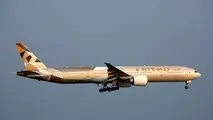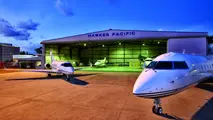Southwest engine failure kills one person ending safety streak
The National Transportation Safety Board confirms that one person died when a CFM International engine on a Southwest Airlines Boeing 737-700 failed inflight on 17 April.

The National Transportation Safety Board confirms that one person died when a CFM International engine on a Southwest Airlines Boeing 737-700 failed inflight on 17 April.
The death, which occurred onboard Southwest flight 1380 enroute to Dallas Love Field from New York LaGuardia, ends a nine-year streak during which no passengers were fatally injured in accidents involving US passenger airlines.
“We do have information there was one fatality,” NTSB chair Robert Sumwalt tells reporters during an impromptu press briefing at Ronald Reagan Washington National airport minutes before an NTSB “go team” departed for Philadelphia International airport where the aircraft diverted.
The NTSB is calling today’s incident an “engine failure” as it has not determined if the event classifies as an “uncontained failure” – the type of catastrophic, rare event in which engine shrapnel actually exits the engine.
Terminology aside, it is clear part of the aircraft – engine component or otherwise – impacted the aircraft fuselage and the broke a window.
“Although parts came out of engine, it might not have been from the section of the engine where an uncontained engine failure occurs,” Sumwalt says.
The incident involved a roughly 18-year old 737-700 (registration N772SW) powered by CFM International CFM56-7B22 turbofans. The aircraft took off from LaGuardia at about 10:45 local time enroute to Dallas Love Field.
After leaving New York, the aircraft took a southwesterly heading toward Texas and ascended for about 20min, reaching an altitude of about 30,000ft, according to FlightStats.com. The 737 then began a rapid descent and turned abruptly west toward Philadelphia, touching down just 15min later.
Video posted on social media shows passengers wearing oxygen masks as the aircraft made the emergency descent.
Pictures also show that a window on the left side of the aircraft several feet behind the wing was broken, with some passengers telling local media that a person was nearly sucked out of the aircraft.
By all accounts the aircraft landed without further incident, and stopped on the tarmac near the runway, where it was met by emergency personnel.
Passengers deplaned using stairs as firefighters dowsed the left side CFM powerplant.
News footage shows the CFM56 engine on the left side of the aircraft badly mangled – a look similar to a CFM engine on a Southwest 737-700 that suffered an uncontained failure over the Gulf of Mexico in August 2016.
Officials have already retrieved the 737’s flight recorders, which will be transported back to Washington DC tonight, says Sumwalt. The NTSB also plans to ship the engine offsite for detailed examination.
The NTSB’s “go team” includes experts in engines, airworthiness, survival factors and operations.
The agency may hold another press briefing later today, Sumwalt says.
Though a 2013 crash at San Francisco of an Asiana Boeing 777 resulted in passenger deaths, the last US passenger airline accident to result in death was the 2009 crash of a Colgan Air Bombardier Q400 near Buffalo, New York.
Southwest Airlines has a remarkably clean safety record, marred until today only by a 2005 accident when one of its 737s overran a runway at Chicago Midway airport, killing one person in a passing automobile.
Source: flightglobal



